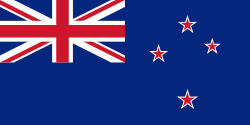Victoria University of Wellington (Victoria University of Wellington)
The Victoria University of Wellington (Te Herenga Waka) is a public university in Wellington, New Zealand. It was established in 1897 by Act of Parliament, and was a constituent college of the University of New Zealand.
The university is well known for its programmes in law, the humanities, and some scientific disciplines, and offers a broad range of other courses. Entry to all courses at first year is open, and entry to second year in some programmes (e.g. law, criminology, creative writing, architecture, engineering ) is restricted.
Victoria had the highest average research grade in the New Zealand Government's Performance Based Research Fund exercise in both 2012 and 2018, having been ranked 4th in 2006 and 3rd in 2003. Victoria has been ranked 215th in the World's Top 500 universities by the QS World University Rankings (2020).
Victoria University of Wellington (originally known as Victoria University College) was founded in 1897, named after Queen Victoria, on the 60th anniversary of her coronation. The original name was Victoria University College, but on the dissolution of the University of New Zealand in 1961 Victoria or "Vic" became the Victoria University of Wellington, conferring its own degrees.
The university is well known for its programmes in law, the humanities, and some scientific disciplines, and offers a broad range of other courses. Entry to all courses at first year is open, and entry to second year in some programmes (e.g. law, criminology, creative writing, architecture, engineering ) is restricted.
Victoria had the highest average research grade in the New Zealand Government's Performance Based Research Fund exercise in both 2012 and 2018, having been ranked 4th in 2006 and 3rd in 2003. Victoria has been ranked 215th in the World's Top 500 universities by the QS World University Rankings (2020).
Victoria University of Wellington (originally known as Victoria University College) was founded in 1897, named after Queen Victoria, on the 60th anniversary of her coronation. The original name was Victoria University College, but on the dissolution of the University of New Zealand in 1961 Victoria or "Vic" became the Victoria University of Wellington, conferring its own degrees.
Map - Victoria University of Wellington (Victoria University of Wellington)
Map
Country - New_Zealand
 |
 |
| Flag of New Zealand | |
The islands of New Zealand were the last large habitable land to be settled by humans. Between about 1280 and 1350, Polynesians began to settle in the islands and then developed a distinctive Māori culture. In 1642, the Dutch explorer Abel Tasman became the first European to sight and record New Zealand. In 1840, representatives of the United Kingdom and Māori chiefs signed the Treaty of Waitangi, which in its English version declared British sovereignty over the islands. In 1841, New Zealand became a colony within the British Empire. Subsequently, a series of conflicts between the colonial government and Māori tribes resulted in the alienation and confiscation of large amounts of Māori land. New Zealand became a dominion in 1907; it gained full statutory independence in 1947, retaining the monarch as head of state. Today, the majority of New Zealand's population of 5.1 million is of European descent; the indigenous Māori are the largest minority, followed by Asians and Pacific Islanders. Reflecting this, New Zealand's culture is mainly derived from Māori and early British settlers, with recent broadening of culture arising from increased immigration. The official languages are English, Māori, and New Zealand Sign Language, with the local dialect of English being dominant.
Currency / Language
| ISO | Currency | Symbol | Significant figures |
|---|---|---|---|
| NZD | New Zealand dollar | $ | 2 |
| ISO | Language |
|---|---|
| EN | English language |















